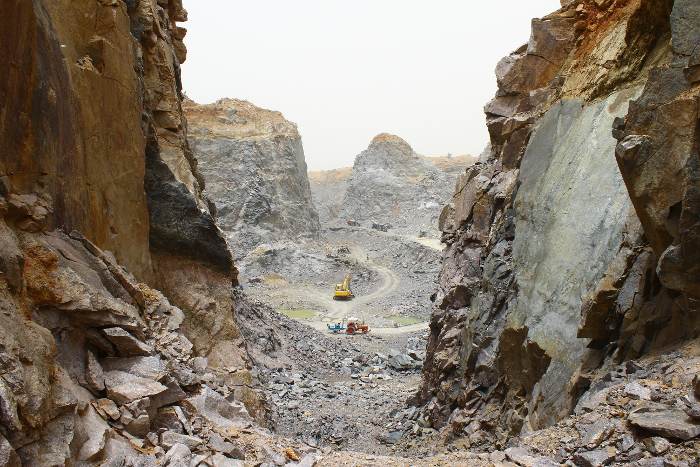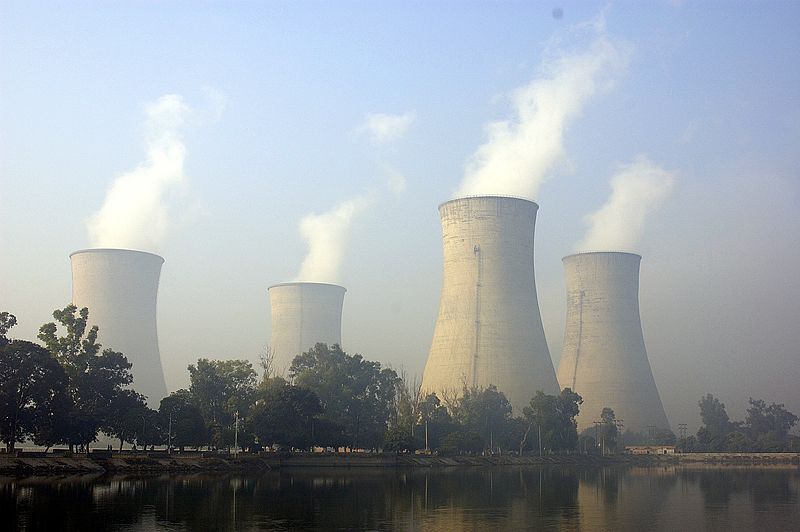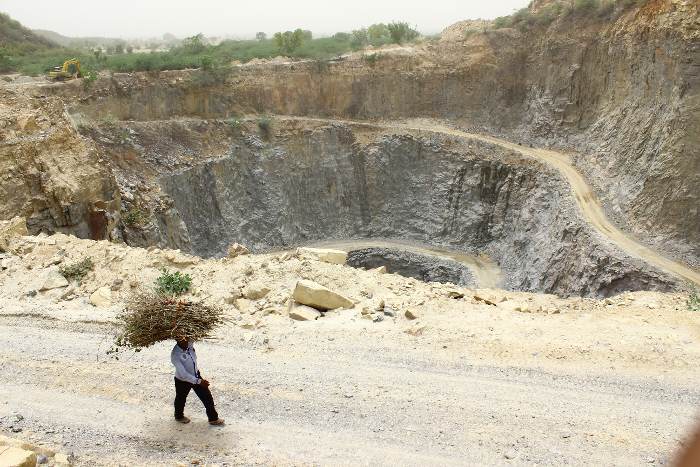The Draft EIA 2020 notification and everything that is wrong with it
While the citizens are in the middle of dealing with a pandemic, the environment ministry has sought public comments on the draft notification, within 60 days from the date of issue. This has drawn heavy backlash


Vidya Viswanathan, Debayan Gupta, Sampada Nayak and Kush Tanvani
Recently, the Union Ministry of Environment, Forests and Climate Change released a draft Environment Impact Assessment 2020 notification. The draft notification was officially issued on March 23, 2020, just a day before the entire country was put under lockdown.
The Environment Impact Assessment (EIA) is an appraisal process to address and ascertain the environmental and social costs of mining, industrial, and infrastructure projects before they are given regulatory approvals to set-up. It is a critical step that builds legal environmental safeguards for a project through a set of conditions. These conditions try to minimise adverse impacts on the environment, public health, and social well-being of the communities who are likely to get affected by these projects.
While the citizens are in the middle of dealing with a pandemic, the environment ministry has sought public comments on the draft notification, within 60 days from the date of issue. This has drawn heavy backlash from citizen groups and civil society. Several environmentalists and activists have written to the ministry urging it to withdraw the draft in lieu of the ongoing COVID-19 crisis.
The EIA is an important law that approves land-use change, water extraction, appropriation of natural resources by industrial and developmental projects, having far-reaching consequences on ecology and communities dependent on it. The decision on what stays or goes away from the law requires inputs from people who will be affected by it. This is practically impossible during a lockdown.

Despite the protests, the environment ministry has not yet revised the deadline — May 23, 2020 — suggesting it intends to go ahead with the process in an undemocratic manner without meaningful participation from the people.
But the timing is not the only issue with the 2020 draft notification. Currently, this assessment process is governed by the EIA Notification 2006, which has been a crucial legal instrument for environmental decision-making in India. The proposed draft has made changes to 12 clauses out of 14 clauses in the 2006 notification and has added new concepts to the law, posing wider ramifications for the ecology and the project-affected people.
The justifications given for the changes suggest they are being made to increase transparency and efficiency of the clearances process through decentralisation. However, closer scrutiny of the nature of changes indicates how the draft has been single-mindedly tailored to promote “ease of doing businesses”.
The draft notification gives numerous exemptions to industries from being appraised by an expert committee or from public consultation and reduces the timelines for the clearance process adversely impacting its rigour and methodology. With post-clearance compliance as well, the frequency for compliance reporting has been reduced, indicating that the regulations have been streamlined with the project proponent’s interest in mind.
These changes run the risk of relegating the EIA process into a mere administrative procedural formality, pushing priorities of industrial growth over environmental protection.

A non-participatory EIA process
Public consultation is an important component of environmental impact assessment; it gives the project-affected communities a platform to voice their concerns, which can help in ascertaining the actual social and environmental impacts of a proposed project.
India is a signatory to the Rio Declaration on Environment and Development (1992), Principle 10 of which talks about the requirement to facilitate meaningful public participation in the environmental decision-making process. The 2006 notification mandated this process for all the projects, i.e. category A and B under its purview, barring only nine broad categories such as area development projects, defense projects, highway expansions, which do not require additional land acquisition.
However, over the years, the list of exemptions has been increased by issuing office memorandums and circulars, circumventing participation of affected people in their impact assessment. Few major exemptions include coal expansion proposals and linear projects such as highways and pipelines across the state borders.
The 2020 draft further reduces this already debilitating space for public participation, by adding more categories into this list of exemptions. The list now covers more than twenty categories of projects, including the highly-toxic common effluent treatment plants, cement, pharmaceutical industries, and any expansion or modernisation project of up to 50 per cent increase in production capacity such as expansion proposals of ports, dams, thermal power plants etc. In the original 2006 EIA notification, it was seven categories.
The draft does not mention any rationale behind why these projects don’t warrant a public consultation, depriving the affected communities from voicing their concerns.
This is not all. The draft also reduces the notice period for a public hearing from 30 days to 20 days. Thus, effectively giving communities only 20 days to read, understand and prepare their observations/ascertain their concerns on highly technical EIA reports. This particularly impairs the ability of communities who either have restricted access to timely information or are unaware of the process, to participate in the consultation process. These changes reduce public participation in a meager token ritual in the entire process.

Weak compliance and monitoring mechanism
Once a project gets an environmental clearance after a detailed EIA, its compliance and regular monitoring are the only ways to ensure that the social and environmental impacts are mitigated and addressed in a timely manner. However, the current draft seems to propose otherwise.
The legal mandate of submitting compliance reports by project proponent was once every six months under the 2006 EIA notification, which has been reduced to a yearly requirement in the 2020 draft, placing reduced responsibility on the project proponent to stay compliant.
While the draft constitutes a third-party monitoring mechanism by empaneling government institutions of national repute, it completely fails to recognise the potential role of project-affected communities in this regard.
Despite growing evidence, including fines or directions from courts and compelling examples of communities bringing instances of non-compliance to the forefront using administrative routes, the 2020 draft mentions that identification of non-compliance is to be done either suo moto by the project proponent or by any government authority. Hence, this draft is a missed opportunity for the regulatory authorities and the citizens, to learn from past experience and strengthen compliance for better environmental protection.

Decentralisation, a farce?
The environment ministry proposes the draft notification as a strong move towards decentralising environmental governance. However, the same draft gives absolute powers to the central government to constitute the state/district regulatory and appraisal committees, the bodies which conduct and regulate the EIA process at the state and district levels, in case state government and union territory administration fail to constitute or forward the names for these bodies within stipulated timelines.
This is a clear departure from the 2006 notification which mandated the central government to have a proper consultation with the state government and UT Administration before constituting such bodies. How does it amount to decentralisation, if more and more projects are being appraised at the state level or district levels, but the powers to constitute these appraisal committees and regulatory authorities heavily sits with the central government?
Regularising Violations
Three years back, on March 14, 2017, the environment ministry came out with a notification allowing a six-month time period to any project that was in violation of the EIA Notification to seek an EC. This one-time amnesty was highly-criticized both by the courts and the people who have been adversely affected by these violating units for so long.
However, rather than reviewing this ill-conceived proposal the 2020 draft institutionalises this process bringing violation projects under regulation. It allows projects operating for several years without an EC to approach the regulatory authority for clearance, when such violation is reported suo moto or by any government authority.
The Supreme Court in a judgment dated 1 April 2020, opined that the concept of ex post facto clearances is against the fundamental principle of environmental protection laws. It is also contrary to both the precautionary principle and the need for sustainable development. If this provision comes through, it will give perpetual amnesty to all the projects which have been in violation for years causing massive irreparable damages to our environment.
At present, the whole world is grappling with a global pandemic which is unarguably an outcome of bio-diversity loss from unbridled human-induced developmental activities. At such a time, a move to bring dilutions into a law that fundamentally regulates these developmental activities to protect the environment could not be more ironic. The current EIA draft not only dilutes the current environmental governance systems, rather it testifies an all-out effort of the government to protect the interests of industries and corporates over its own people and the environment.
The authors are environmental researchers at the Centre for Policy Research, New Delhi. A working paper with a full analysis of the 2020 draft EIA Notification shall be coming out soon.

